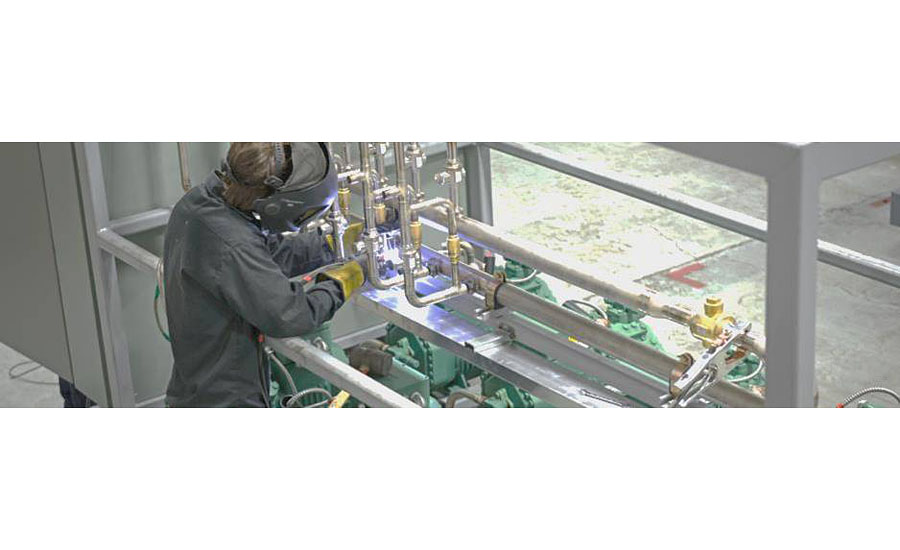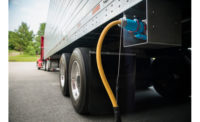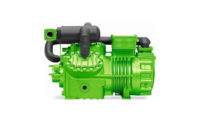Carnot Refrigeration, Canada, was hired by a major wholesaler and retailer in Canada to develop an alternative to the conventional refrigerated systems available on the market. The goal was to provide an eco-friendly refrigeration solution that would be cost-effective and efficient, yet could be integrated successfully into the building and easily understood by personnel. The wholesaler/retailer evaluated initial capital cost and operational costs, such as energy consumption, maintenance and insurance. Successful building integration utilized Carnot’s unique heat recovery process, which offsets auxiliary heating, to provide year-after-year financial savings.
About the high-pressure system
A supermarket (part of the second largest banner in Canada) in the north of Montreal boasts a total area of 40 866 ft2 (3 797 m2). The sales area of 30 488 ft2 (2 832 m2) offers 744 feet (227 m) of refrigerated cases (85 MT cases) and 305 feet (93 m) of freezers. This supermarket optimizes use of Carnot’s waste heat recovery strategies, which maximizes financial savings and building integration, as well as a heat recovery system that satisfies almost all the annual heating needs of the supermarket and a pre-heating water loop.
The Carnot strategy to defrost requirements is a unique approach to standard industry offerings.
Accelerated passive defrost (APD) is an innovative method applicable to medium-temperature applications. By intelligently controlling the liquid used for refrigeration and warm gas used for defrost, the evaporator defrosts while remaining in refrigeration mode. This ensures product integrity and longevity.
Benefits of APD:
- Electrical components are not required.
- Significant improvement with product temperature stability.
- No additional piping or refrigeration hardware required for site install.
- Reduces and sometimes eliminates evaporator frosting.
For the low-temperature defrost process for refrigerated cases and freezer rooms, Carnot Refrigeration uses an electronic expansion valve that opens or closes in real time to provide exactly the right amount of heat needed by each case to melt the ice. Low-pressure gas is used (about 440-500 psig) to defrost the refrigerated cases and the evaporators of the freezer rooms.
During the defrost cycle, the same lines are used for the refrigeration cycle. In refrigeration mode, liquid CO2 is directed to the display cases via the designated circuit line. In defrost mode, the hot gas is directed straight to the display cases using the same designated circuit liquid line. This methodology simplifies conventional refrigeration hot gas defrost installs and saves on piping cost.
To sum up, the biggest advantage of the accelerated passive defrost and hot gas defrost in CO2 refrigeration systems is the stability and the homogeneity of the temperature levels in display cases, freezers and preparation rooms.
Conclusion
Nowadays, transcritical CO2 refrigeration technology is a proven performer with guaranteed economies in Canada. The systems installed by Carnot Refrigeration in various supermarkets are evidence of this. In fact, the greenhouse gas emissions are said to be lower than those from a conventional supermarket of the same size in Canada. These gains are attributable to the reduction in synthetic refrigerant charges and the decrease of the total energy consumption (-10%). In addition, the heating of the sales area is entirely provided by the heat recovery strategy, which offsets auxiliary heating energy consumption.






